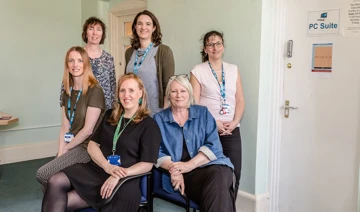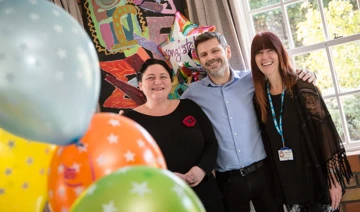Complex Emotional Difficulties – seeing the person behind the diagnosis
Date added: 27 July 2020

Living with a diagnosis of Personality Disorder (PD) can be frustrating, not only for the individual diagnosed but also for their families and friends who are all too often left feeling confused, ill informed and furthermore with little idea how to best support their loved one.
People with a personality disorder, just like anyone who has mental health difficulties, can be stigmatised because of their diagnosis. This can attract fear, anger and disapproval rather than compassion, support and understanding, often impacting on the person and causing their condition to spiral.
Clinical lead for the Complex Emotional Difficulties Pathway, Dr James Osborne said: “For many years, there has been a growing acknowledgement of the ambivalence about the personality disorder diagnosis. For some people it is welcomed for recognising the real struggle and for opening up increasingly advanced treatment options, while others feel it stigmatises and creates a negative attitude towards people associated with the diagnosis.
“Personality Disorder is still seen by some as a diagnosis of exclusion, meaning they often feel unsupported and with purely a label – an all encompassing term that just doesn’t fit or match who they are and how they feel.
“The Royal College of Psychiatry has recently published its position statement entitled Services for people diagnosable with personality disorder and the different perspectives around the label were reflected in the statement.
“What is generally recognised is that the diagnosis should either be replaced by, or stand next to a bio-psycho-social formulation to understand the person within the context of their life. In other words, look beyond the diagnosis and see the bigger picture of the person’s whole life, not just one aspect of it.”
“The language used in mental health is really important particularly around personality disorder, and although the forthcoming International Classification of Diseases – 11 (World Health Organisation) suggests the diagnosis is set to stay, it seemed like the right time to engage all interested parties in having their say in what we named our clinical pathway for people diagnosable with a personality disorder as we were looking to launch our clinical care pathway programme.”
In January of this year the Trust held a workshop entitled Inspiring Change and Transforming Attitudes, facilitated by The National Collaborating Centre for Mental Health, which brought together over 150 people for one day to discuss these aspects of the pathway including language used around personality disorder and its treatment.
James explained: “We wanted a workshop style forum where all interested people including service users, carers, clinicians, and commissioners, could talk openly about their experiences of the use of the term personality disorder and consider the naming of the pathway among many other things.
“The workshop also gave the team an opportunity to hear from people living with personality disorder, how the pathway could be improved as well as how the wider system could potentially support attitudinal change across healthcare professionals.”
Co-production is an area of service design and transformation that is recognised as vital when looking to make improvements across services.
“Not only did we have good representation from service users, carers and families, we had the police, housing, councils and the voluntary sector too – it was a very productive day and has helped shape how we move forward now.”
“What became very apparent during the workshop was that people broadly fell into two categories – those that wanted to change the pathway name and try to move away from the stigma of the diagnosis, and those that were happy with sticking with calling it the Personality Disorder Pathway as it clearly links it to a recognised diagnosis. However, as the day progressed, what emerged was broad agreement that it was less about the importance of the name and more about the attitudes towards working with people with a personality disorder.
“We were therefore left with was several key phrases including complex trauma, trauma related difficulties, complex emotional difficulties, complex needs and through this what became quite clear was that people didn’t like the term ‘disorder’. However, no one clear name emerged as preferred over and above every other suggestion.”
After much debate with fellow clinicians about the advantages and disadvantages of a name change, it was decided to contact all the participants of the workshop to ask for their feedback and to ask them to provide feedback on the proposed name of Complex Emotional Difficulties. In large part the response to this was really positive both in agreement with the rationale for changing the name and to the new pathway name Complex Emotional Difficulties.
Dr Osborne added: “Really, if I am honest the conversation became less about whether a change of name was the right thing to do and more about whether that name change would help serve as a catalyst for a change in attitude, something I hear over and over again. On balanced, this seemed a good enough reason to change the name and work has now begun to embed the name.”
James said: “Our work is only just beginning. My hope from this name change across the organisation is that it prompts discussion and begins a new narrative to force us to focus on the person behind the label.
“While I am clear that changing attitudes won’t solely be achieved by changing the name alone, I think it will start us on the right foot. As we adopt this new language, if we can begin with ‘what has happened to you?’ instead of ‘what is wrong with you?’ then we begin a whole different type of conversation with people.”



